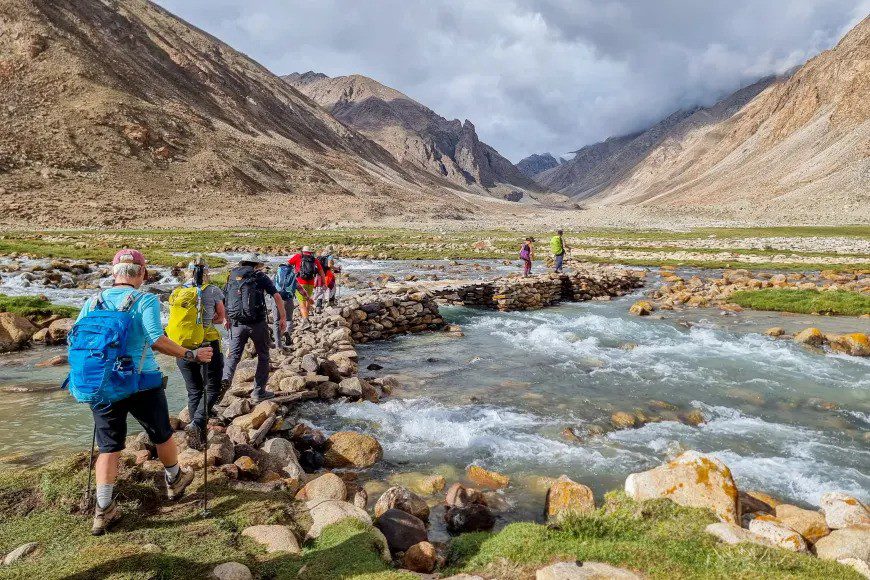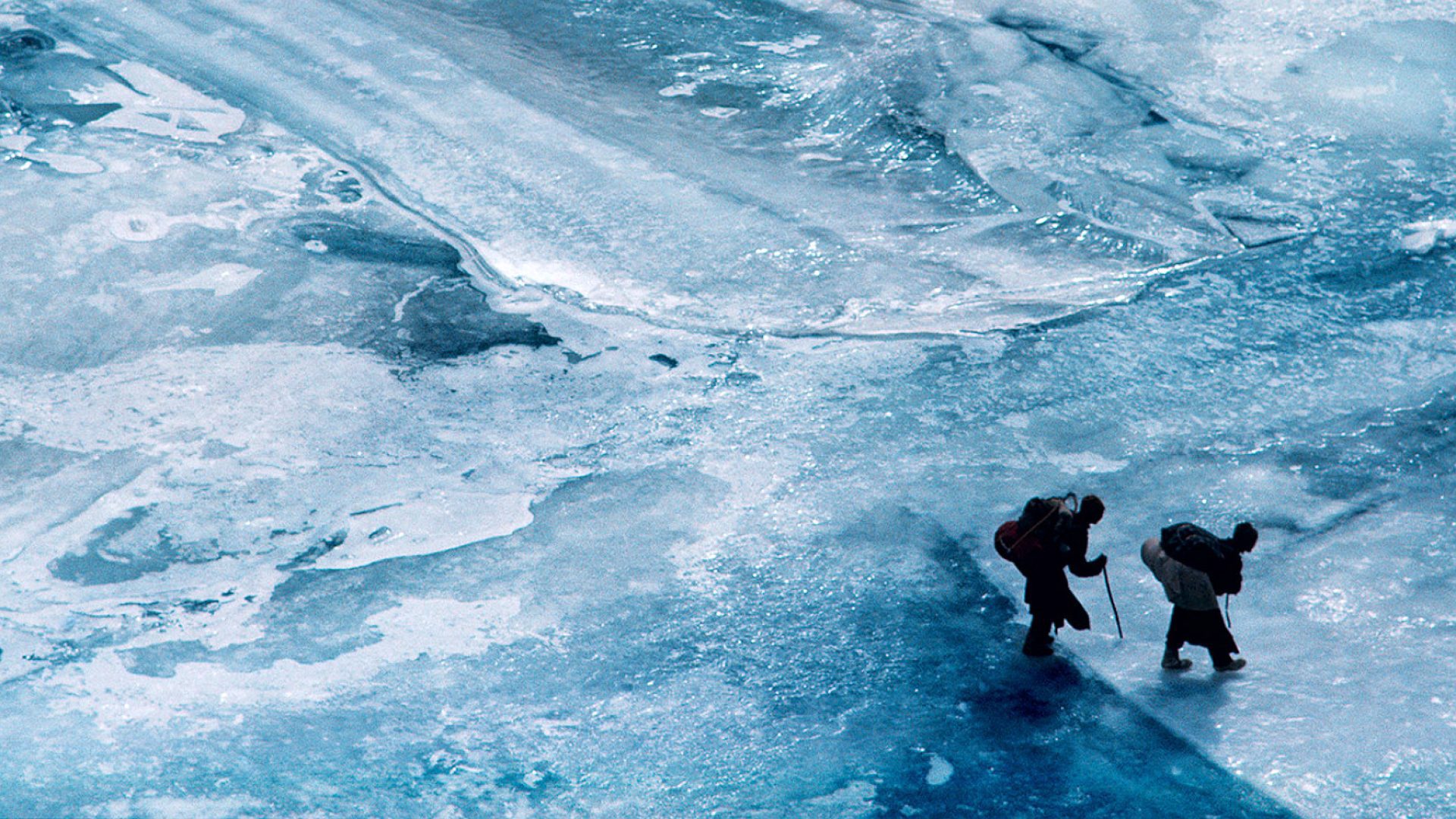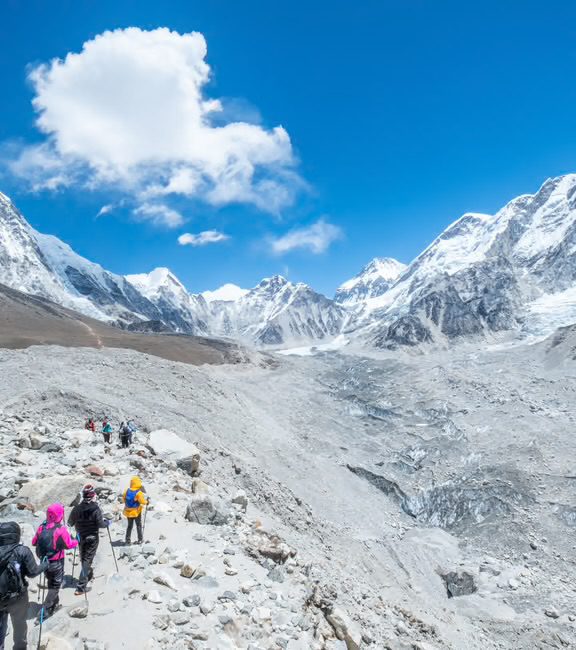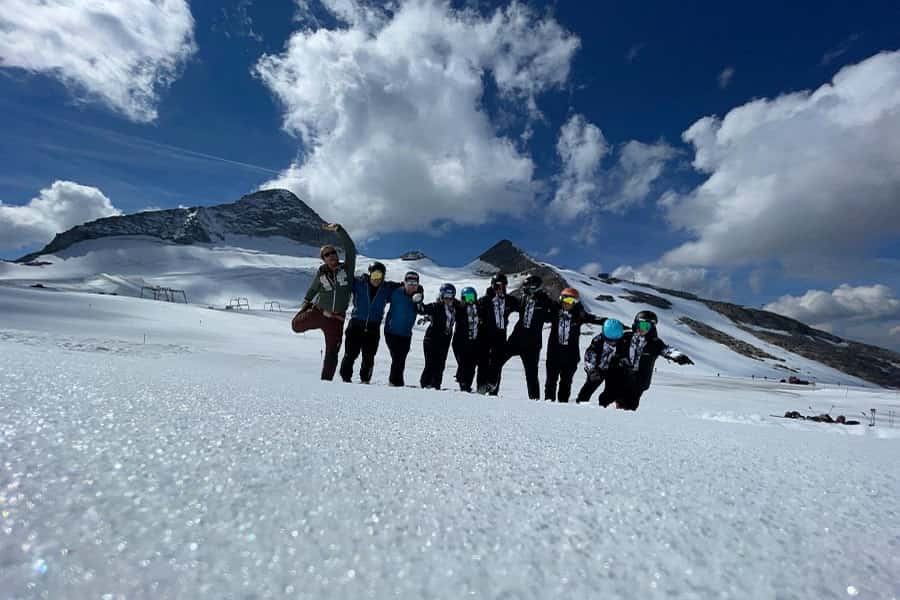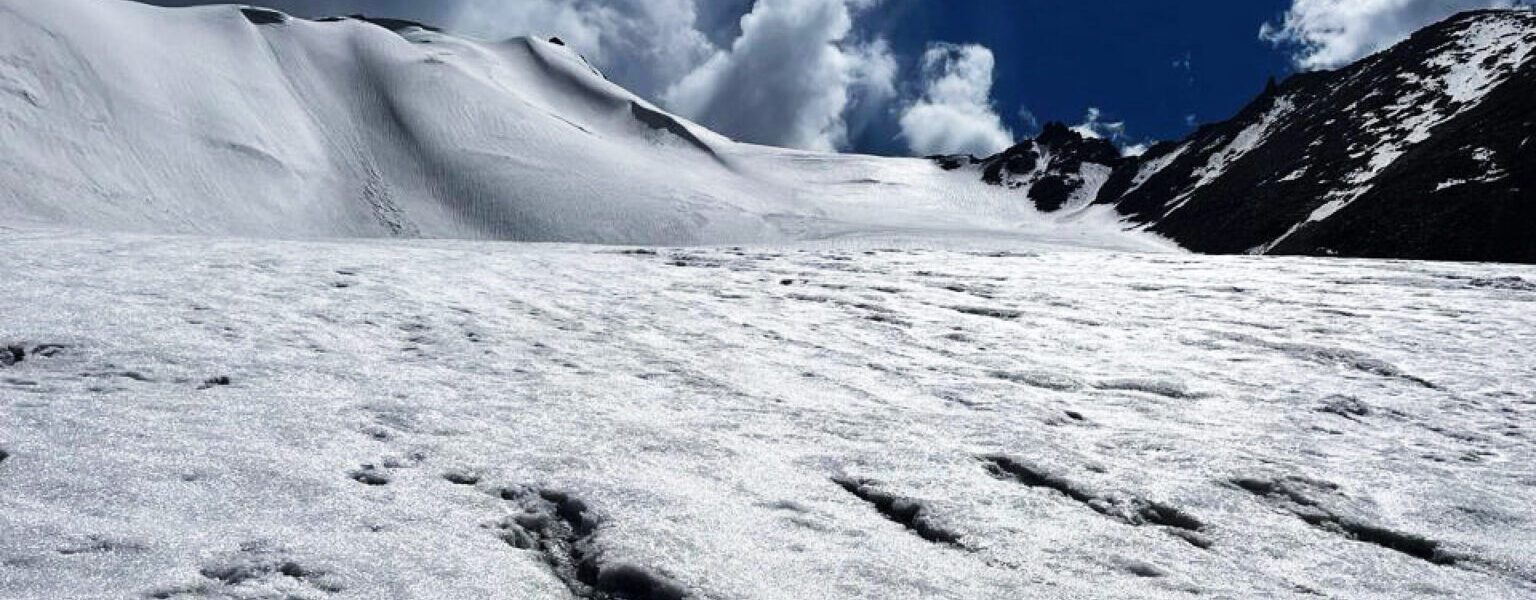Ladakh, known as the “Land of High Passes,” offers a one-of-a-kind trekking experience that takes adventurers through some of the most extreme terrains on Earth. Imagine walking amidst towering glaciers, crossing freezing rivers, and ending your trek in golden sand dunes. This journey through Ladakh’s breathtaking extremes is a trekker’s dream come true, blending natural beauty, cultural immersion, and physical challenges.
In this guide, we’ll take you through the glacier-to-desert trekking experience, covering preparation, iconic routes, and everything in between.
Why Ladakh is a Trekker’s Paradise
Unique Geography of Ladakh
Ladakh is a high-altitude cold desert region situated between the Karakoram and Himalayan ranges. Its striking contrasts—from icy glaciers like those in the Zanskar Valley to arid desert-like stretches in Nubra Valley—make it a geographic wonderland for trekkers.
Notable highlights include the Hunder Sand Dunes, nestled amidst rugged mountains, and the frozen Zanskar River, an iconic trekking route in winter. These starkly different terrains allow trekkers to witness the incredible variety of Ladakh’s landscape in a single trip.
Cultural and Spiritual Highlights Along the Trails
Ladakh’s trekking routes are peppered with ancient monasteries, prayer flags fluttering in the wind, and quaint villages where time seems to stand still. Visiting monasteries like Diskit along the Nubra Valley route or remote hamlets in Zanskar allows trekkers to experience Ladakhi culture firsthand.

“I’ll never forget the kindness of the locals I met in Zanskar Valley. They welcomed us with warm butter tea and shared stories about their lives. It made the trek so much more than just a physical journey.”
— James M., Engineer, USA
Preparing for the Glacier-to-Desert Trek in Ladakh
Choosing the Best Season for Trekking
The ideal time for trekking in Ladakh is from May to September, when the weather is relatively stable. During this period, glaciers are accessible, and desert areas are cooler. The blooming flora in valleys like Zanskar adds vibrant colors to the trails.
| Month |
Weather |
Recommended Trekking Routes |
| May-June |
Mild, snowy trails at glaciers |
Zanskar Valley, Nubra Valley |
| July-August |
Warm, clear skies |
Nubra Valley, Pangong Tso Trails |
| September |
Crisp air, beautiful autumn hues |
Zanskar, Chadar Trek |
Essential Gear for High-Altitude Treks
Packing right is crucial for Ladakh’s extreme climate. Prepare for temperatures ranging from freezing cold near glaciers to dry heat in desert regions.
- Clothing: Layered clothing, waterproof jackets, thermal innerwear.
- Footwear: High-ankle trekking shoes with good grip.
- Other Essentials: Trekking poles, sunscreen, hydration packs, and sleeping bags rated for sub-zero temperatures.
Pro Tip: Carry extra pairs of socks and gloves as they can get wet during glacier crossings.
Physical and Mental Preparation for Trekkers
Acclimatization is vital to prevent altitude sickness, especially in Ladakh, where elevations can exceed 5,000 meters. Plan to spend a day or two in Leh before starting your trek to adjust to the altitude.
“I underestimated how important acclimatization was. Spending two days in Leh before trekking made all the difference!”
— Maria T., Photographer, Spain
The Glacier-to-Desert Trek: Routes and Highlights
Zanskar Valley: A Journey Through Ice and Stone
Zanskar Valley is a trekker’s haven, renowned for its stunning glacier-fed rivers and rugged mountains. Trekkers often begin their journey in Padum, passing through picturesque landscapes dominated by frozen rivers and snow-covered peaks.

Route Highlights:
- Frozen water crossings.
- Encounters with Himalayan wildlife, including blue sheep and snow leopards.
- Remote villages like Purne, where traditional Ladakhi culture thrives.
“The frozen rivers of Zanskar were surreal. It felt like stepping into another world.”
— Daniel H., Teacher, Australia
Nubra Valley: From Sand Dunes to Snowy Peaks
The Nubra Valley trek combines the beauty of golden sand dunes with snow-capped mountains. Begin your journey at Hunder, known for its Bactrian camels, and make your way to the Siachen Glacier for a truly diverse experience.

Route Highlights:
- Riding camels across the dunes of Hunder.
- Visits to Diskit Monastery and its iconic Maitreya Buddha statue.
- Trekking through mountain passes like Khardung La.
Pro Tip: Plan your trek during sunrise or sunset for breathtaking views of the sand dunes.
The Frozen Wonders of Chadar Trek
For winter adventurers, the Chadar Trek offers a thrilling walk on the frozen Zanskar River. Though challenging, this trek rewards you with incredible icy landscapes and natural caves.
Route Highlights:
- Unique experience of walking on ice.
- Interactions with locals who rely on these frozen paths for transportation.
- Awe-inspiring icy waterfalls.
“Walking on the Chadar felt like being in an adventure movie. It was the most rewarding trek of my life.”
— Alex R., Software Developer, Canada
Challenges and Rewards of Ladakh’s Extreme Treks
Adapting to Ladakh’s Extreme Climate
Ladakh’s weather can change dramatically. Be prepared for freezing winds near glaciers and dry heat in desert regions. Carrying the right gear and staying hydrated are key to tackling these extremes.
Navigating Ladakh’s Remote Terrain
The trails can be treacherous, with narrow paths, slippery ice, and steep climbs. Hiring an experienced guide ensures safety and allows you to focus on enjoying the journey.

Memorable Rewards for Adventurous Trekkers
Despite the challenges, the rewards are immense:
- Majestic sunrises over snow-capped peaks.
- Golden sunsets painting the sand dunes in vivid hues.
- A sense of accomplishment like no other.
“The moment I reached the sand dunes after days of trekking glaciers, I was speechless. Ladakh’s contrasts are magical.”
— Priya K., Architect, India
Frequently Asked Questions About Trekking in Ladakh
What’s the difficulty level of Ladakh’s glacier-to-desert treks?
Most treks range from moderate to challenging, requiring good physical fitness and acclimatization.
How can I acclimatize to Ladakh’s high altitude?
Spend 1-2 days in Leh before trekking and stay hydrated.
Are permits required for trekking in Ladakh?
Yes, Inner Line Permits are necessary for some areas like Nubra Valley.
What should I pack for Ladakh treks?
Layered clothing, waterproof gear, trekking poles, and high-calorie snacks.
Can beginners attempt Ladakh’s treks?
Some routes like Nubra Valley are beginner-friendly, while others like the Chadar Trek are more suited for experienced trekkers.
Glacier to desert trek in Ladakh
Glacier to desert trek in Ladakh | The journey through Ladakh mirrors the very essence of unraveling unknown horizons, as its dramatic landscapes and unique cultural identity awaken the deepest sense of wonder and exploration. Glacier to desert trek in Ladakh delves into this realm where inner peace intertwines with the wild, untouched beauty of Ladakh. From the snow-capped peaks to the serene monasteries, every step in Ladakh is a step toward self-discovery. The mountains, ancient paths, and unspoken mysteries stretch before travelers, offering a meditative experience where each encounter feels both effortless and transformative. Whether it’s trekking across remote valleys or sitting quietly beside a sacred lake, Ladakh invites those who seek a deeper connection to the natural and spiritual world.

Glacier to desert trek in Ladakh
The monasteries of Ladakh stand as living monuments to the region’s profound spiritual heritage. With origins dating back over a thousand years, these ancient structures are both places of worship and repositories of art, culture, and wisdom. Hemis Monastery, one of the largest in Ladakh, is renowned for its annual festival, featuring colorful mask dances performed by monks. The history of these monasteries reflects Ladakh’s role as a crossroads between India, Tibet, and Central Asia, where religious and cultural influences have intertwined over the centuries.
The Tibetan Buddhist influence is especially evident in the architecture and daily life of the monks. Prayer wheels, intricate murals, and the soft hum of chants fill the air as visitors explore the monastery grounds. Each monastery, from the remote Lamayuru to the awe-inspiring Thiksey, offers a window into the spiritual heart of Ladakh. These centers of meditation, learning, and community life continue to thrive, preserving traditions that have shaped Ladakh for generations.
Why Visit Ladakh for Glacier to desert trek in Ladakh?
Ladakh is a destination that transcends mere travel. It offers a journey that touches both the outer and inner landscapes, making it a perfect setting for those who seek to unravel their own unknown horizons. The region’s breathtaking scenery—from towering mountain ranges to hidden valleys—provides not just an escape but a space for contemplation and growth. Ladakh’s culture, deeply rooted in Buddhist practices, invites visitors to reflect on their own lives and the world around them.
Ladakh’s people, known for their warmth and hospitality, add to the richness of the experience. Villages like Sumda Chun and the legendary Nubra Valley introduce travelers to a way of life that is intricately connected to nature and spirituality. Staying in local homestays allows for immersive experiences where one can learn about traditional Ladakhi customs, share meals made from local produce, and participate in community rituals.

Beyond its natural beauty, Ladakh offers a unique opportunity to explore oneself. The vastness of the region’s plateaus and the clarity of its skies seem to mirror the vastness of the human spirit. Whether it’s standing atop a mountain pass at 18,000 feet or meditating in a centuries-old monastery, Ladakh helps unravel the unknown horizons within each traveler.
Finding the Best Glacier to desert trek in Ladakh in Ladakh
Finding the best places in Ladakh to experience “Glacier to desert trek in Ladakh” involves venturing off the beaten path. Ladakh’s lesser-known treks, such as those leading to secluded monasteries or high-altitude lakes, offer unparalleled opportunities for solitude and reflection. The Markha Valley trek, for instance, takes travelers through verdant valleys, ancient villages, and high-altitude passes, allowing for both physical and spiritual exploration.
Ladakh’s iconic lakes, including Pangong Tso and Tso Moriri, are ideal spots for quiet contemplation. Their still waters reflect the sky, creating a mesmerizing landscape that feels timeless and infinite. Sitting beside these lakes, especially at dawn or dusk, brings an overwhelming sense of peace and connection with nature.

For those interested in Ladakh’s spiritual heritage, exploring monasteries such as Alchi, Phyang, or Diskit can be a transformative experience. These sites are not just places of worship but also centers of art, philosophy, and wisdom. Visiting these monasteries, with their ancient murals and intricate statues, offers insight into Ladakh’s rich cultural tapestry.
Ladakh’s Atmosphere and Glacier to desert trek in Ladakh
Ladakh’s atmosphere is unlike any other place on Earth. The stark contrasts between the rugged mountains and the serene, tranquil monasteries create an environment that feels both raw and sacred. The traditional decor in Ladakhi homes and religious sites reflects this balance, with mud-brick houses adorned with prayer flags and colorful thangkas (Buddhist paintings) that add warmth and spiritual meaning to the space.

The interiors of Ladakhi homes, often simple and functional, are filled with symbols of devotion. Small shrines dedicated to Buddhist deities are common, and the air is often fragrant with incense. The use of earthy materials, like stone and wood, along with brightly colored textiles, creates an inviting and peaceful space, perfect for relaxation and reflection.
Traditional Glacier to desert trek in Ladakh
Traditional Glacier to desert trek in Ladakh is an integral part of the region’s identity, offering a unique blend of flavors that reflect its harsh climate and remote location. Hearty, warming dishes such as thukpa (noodle soup) and momos (dumplings) provide the sustenance needed to endure Ladakh’s cold temperatures. Skyu, a thick stew made with root vegetables and barley, is another staple of the Ladakhi diet, designed to nourish both body and spirit.

Drinks like butter tea, made with yak butter and salt, are a must-try for anyone visiting Ladakh. This rich, savory drink is not only warming but also hydrating, making it essential for those venturing into the high-altitude regions of Ladakh. Chang, a local barley beer, is often enjoyed during festivals and community gatherings, adding a sense of joy and camaraderie to any occasion.
Live Cultural Glacier to desert trek in Ladakh in Ladakh
Ladakh is home to a vibrant cultural scene, with festivals and live performances held throughout the year. The Hemis Festival, which celebrates the birth of Guru Padmasambhava, is one of the largest and most famous events in the region. Monks dressed in elaborate costumes perform cham dances, which depict the triumph of good over evil. The energy of the festival, with its bright colors, rhythmic music, and elaborate rituals, draws visitors from around the world.
Other local festivals, such as the Losar (New Year) and Ladakh Festival, provide visitors with the chance to witness traditional dance, music, and crafts that have been passed down through generations. These events are more than just entertainment; they are a celebration of Ladakh’s rich cultural heritage and its deep connection to the spiritual world.
Trekking and Outdoor Activities Glacier to desert trek in Ladakh
Ladakh is a trekker’s paradise, offering some of the most stunning and challenging routes in the world. From the famous Glacier to desert trek in Ladakh, which follows the frozen Zanskar River, to lesser-known routes like the Sham Valley or Nubra Valley treks, Ladakh’s landscape offers endless possibilities for adventure and discovery. The high-altitude passes, such as Khardung La and Chang La, offer breathtaking views of snow-capped peaks and sprawling valleys.

Wildlife enthusiasts will also find Glacier to desert trek in Ladakh to be a haven for rare species such as the snow leopard, Himalayan blue sheep, and the Tibetan wild ass. Winter expeditions to spot the elusive snow leopard in the Hemis National Park are gaining popularity among wildlife photographers and conservationists alike.
The Importance of Preserving Ladakh’s Glacier to desert trek in Ladakh
Ladakh’s rich cultural and environmental Glacier to desert trek in Ladakh is under increasing threat from climate change and mass tourism. Preserving this unique region requires careful attention to sustainable tourism practices. Choosing eco-friendly accommodations, supporting local businesses, and participating in community-led conservation efforts are just a few ways that visitors can contribute to the preservation of Ladakh’s natural and cultural heritage.
Ladakh’s people have a long history of living in harmony with their environment, practicing sustainable agriculture, and maintaining a deep spiritual connection to the land. Visitors are encouraged to follow the same principles, leaving no trace and respecting the fragile ecosystems that make Ladakh so special.
Etiquette and Tips for Visiting Glacier to desert trek in Ladakh
Before visiting Ladakh, it’s essential to understand and respect the region’s customs and traditions. As a deeply spiritual place, Ladakh requires visitors to dress modestly, especially when visiting monasteries or attending religious ceremonies. Always ask for permission before taking photographs inside monasteries or of local people.
Medical Glacier to desert trek in Ladakh
Spa trail Glacier to desert trek in Ladakh
Glacier to desert trek in Ladakh

When Glacier to desert trek in Ladakh, remember to stay on designated paths to avoid damaging fragile ecosystems. Tipping is appreciated but not expected in most settings, and it’s important to carry cash, as many remote areas do not accept credit cards. Lastly, be mindful of altitude sickness and take the necessary precautions when traveling to higher elevations.
Conclusion: Enjoying Glacier to desert trek in Ladakh in Ladakh
Ladakh is a place where the physical and spiritual worlds converge, offering travelers a journey unlike any other. Whether you’re trekking across high-altitude deserts, exploring ancient monasteries, or simply sitting in quiet reflection by a mountain lake, Ladakh invites you to unravel your own unknown horizons. By respecting the region’s traditions and practicing sustainable tourism, you help ensure that Ladakh’s beauty and cultural richness will be preserved for future generations to explore and enjoy.
